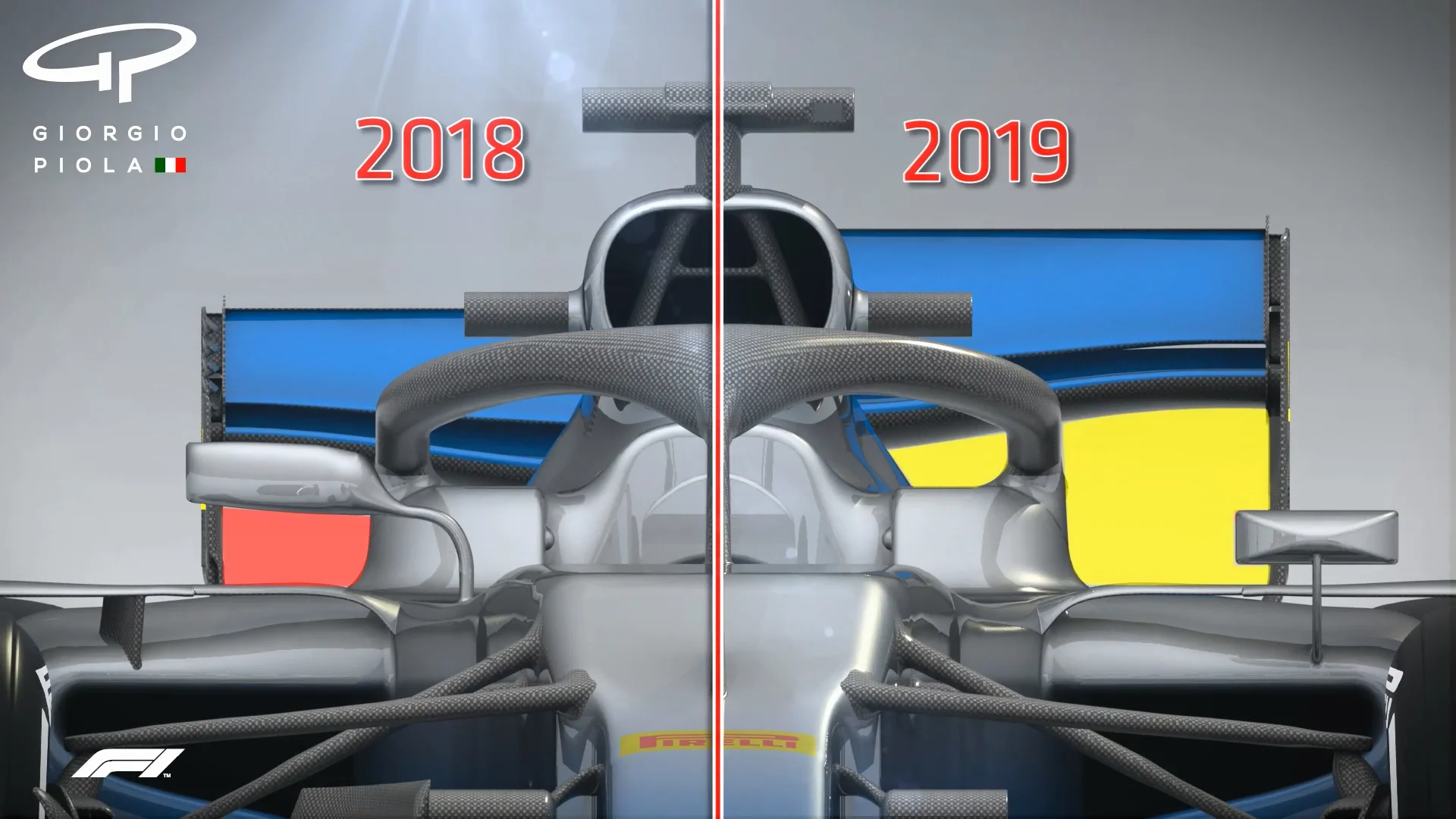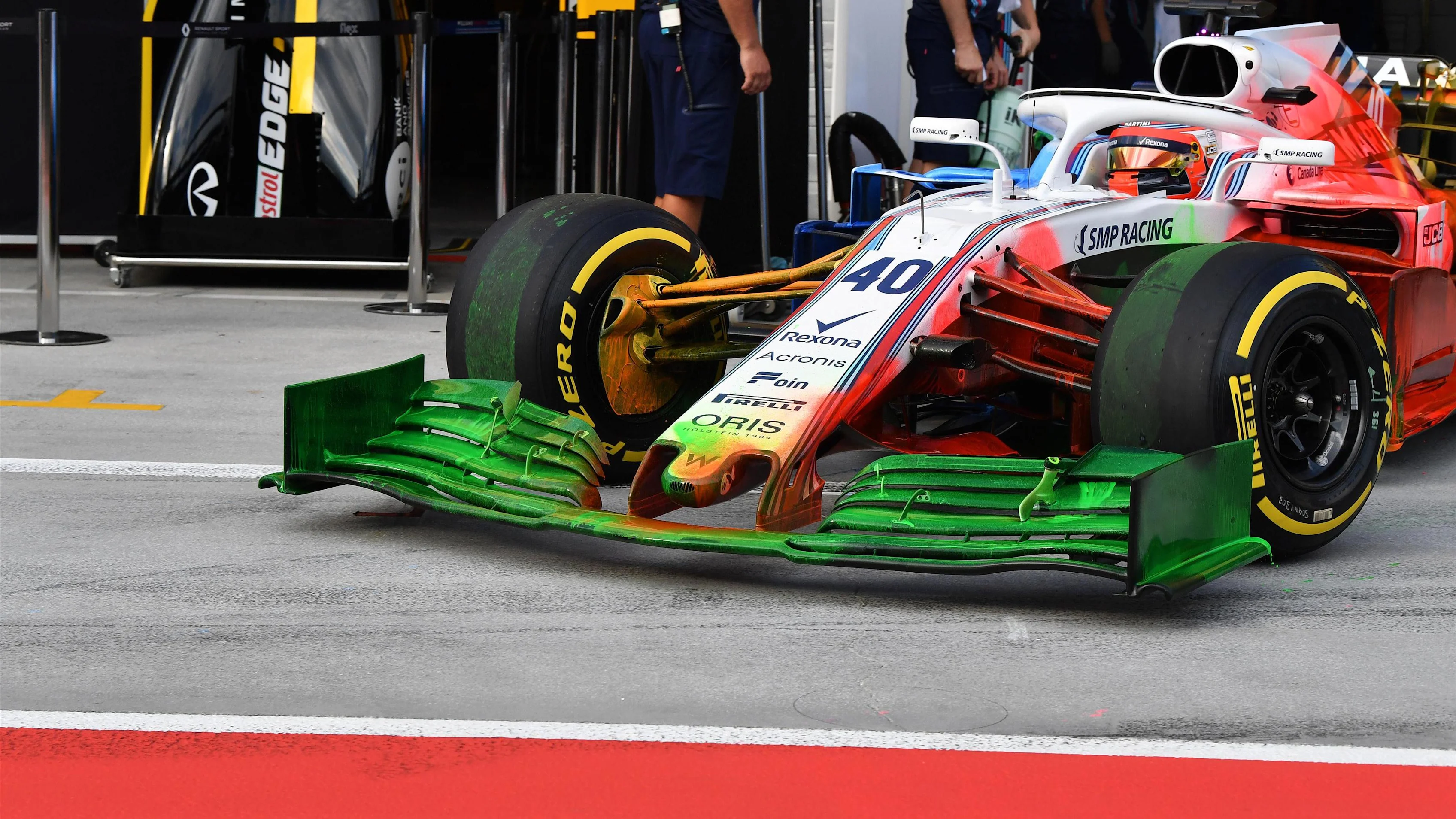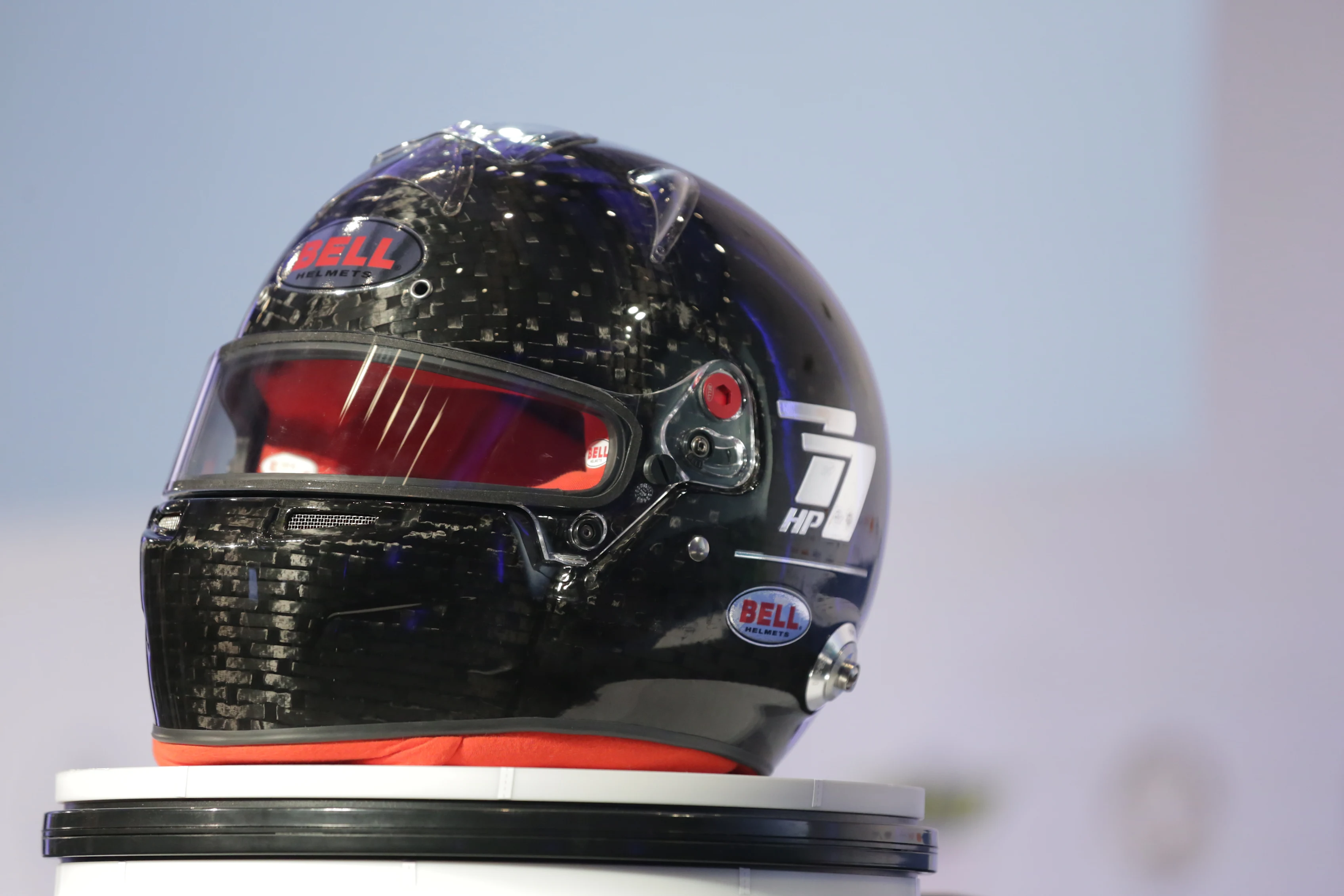F1 RULES & REGULATIONS: What’s new for 2019?

A new year means new rules. Those for 2019 may not be the wholescale changes due for 2021 – all aimed at making F1 racing even more competitive - but they are laying the all-important groundwork. Some will be obvious – the cars will look noticeably different – but others are subtler, though no less notable. Here’s our round-up of what you need to know about the new season’s regulations…
NEW FRONT WING
What’s the change: A wider, higher – and much simplified – front wing
Why has it been made: To help chasing drivers follow the car in front more closely - and in turn increase the possibility of overtaking.
The wing's width is increased by 200mm, its height by 20mm, and it’s moved forward by 25mm.
Complex endplates that outwash airflow around the front tyres are banned. Instead, much simpler endplates mean almost the full width of the wing is devoted to direct downforce generation.
The wing’s added height further enhances its power and make it less sensitive to stall - so drivers are less likely to suddenly lose front-end grip when they close up on another car.
The multiple under-wing strakes seen on 2018 cars are now limited to two each side, meaning more of the airflow is fed to the underbody. This is less sensitive to aerodynamic disturbance and so creates a less choppy 'wake' for a following driver to deal with.

NEW BARGE BOARDS
What’s the change: Smaller – and repositioned – barge boards
Why has it been made: To make them less powerful and less aerodynamically disruptive. The barge boards are reduced in height by 150mm, and moved forward by 100mm to better join up the airflow from the front wing. This ultimately helps make the flow coming off the rear of the car less problematic for following drivers, meaning they should be able to get closer to the car in front.
NEW REAR WING
What’s the change: A higher, wider, simpler wing
Why has it been made: Like the front wing, to help promote even closer racing. Height is up by 20mm, taking the 'rooster tail' wake coming off the back car higher into the air. Combined with a width increase of 100mm, the larger wing assembly creates a bigger hole in the air – to the benefit of cars trying to slipstream behind.
Furthermore, the DRS opening is increased by 20mm, boosting its potential power by around 25 percent, and a limitation has been placed upon the pressure-equalising endplate slots of 2018.
NEW BRAKE DUCTS
What’s the change: Simplified design
Why has it been made: To reduce the aerodynamic exploitation of brake ducts. Restrictions on complex designs mean less surface area for aerodynamicists to play with. The change also means less downforce reduction when that area of the car is in disturbed air – something else that, again, should help drivers when following another car closely.
REVISED TYRE COLOURS
What’s the change: Rather than the rainbow of tyre colours used in 2018, Pirelli have cut that down to three for 2019
Why has it been made: To make understanding strategy easier for fans, the terms hypersoft, ultrasoft and supersoft have been consigned to the history books. Now each Grand Prix will feature simply a white-marked hard tyre, a yellow-marked medium, and a red-marked soft. However, the actual compounds used for those three designations will change depending on the circuit, with Pirelli having five to choose from – C1 being the hardest, C5 the softest.
BIOMETRIC GLOVES
What’s the change: Drivers are required to wear biometric gloves
Why has it been made: To increase safety and help facilitate medical rescue. The gloves – developed by the FIA Safety Department – feature sensors stitched into the fabric that monitor the driver’s pulse rate and the oxygen levels in his blood. They transmit that potentially life-saving data back to the at-track medical team, before, during and after a crash.
REAR WING ENDPLATE LIGHTS
What’s the change: Two additional rear lights, one on each endplate
Why has it been made: To increase visibility of cars in poor weather conditions, and hence improve safety. As well as the traditional rear central light, cars must also have an additional LED light on each rear wing endplate. These must be illuminated at all times when a driver is using intermediate or wet-weather tyres.
INCREASED FUEL ALLOWANCE
What’s the change: Drivers may use up to 110kg of fuel – previously 105kg – in the race.
Why has it been made: To allow drivers to use the engine at full power at all times. They should no longer have to worry so much about conserving fuel – and will hence be able to push harder, especially in the closing stages of a Grand Prix.
EVEN STRONGER HELMETS
What’s the change: New, stricter crash helmet requirements
Why has it been made: To give F1 safety another leap forwards. As of 2019, all helmets must conform to the new FIA 8860-2018 standard. Over a decade in the making, this standard means an ultra-protective helmet offering a number of vital safety benefits, including advanced ballistic protection and increased energy absorption. The front of the visor has been lowered by 10mm to reduce the risks associated with impact from debris, while the helmet shell uses advanced composite materials to ensure improved resistance to crushing and penetration.

CAR AND DRIVER WEIGHT
What’s the change: Driver weight will now be considered separately to the car
Why has it been made: So that heavier drivers are no longer disadvantaged by the weight regulations. The minimum weight of the car, without fuel, has gone up slightly from 733kg to 740kg. More importantly, at least 80kg of that must be made up of the driver, his seat and driving equipment. Lighter drivers can bring themselves up to the 80kg threshold by adding ballast, but crucially this ballast must be positioned in the immediate cockpit area – and cannot be used elsewhere on the car to help improve its balance.
MISCELLANEOUS
Self-scrutineering: Cars will no longer be scrutineered in the traditional sense at the start of the Grand Prix weekend. Instead, competitors must sign a declaration that they are in compliance with the rules – and, of course, the stewards can make random checks at any time.
End-of-race signal: The traditional chequered flag is still shown as well, but the official end-of-race signal is now a chequered light panel at the finishing line.
Mirror mods: Small changes to the mirror regulations in light of the larger rear wing, in order to maintain adequate rear view visibility and safety.
Caught on camera: The on-board camera regulations have been modified to improve the TV spectacle.
Towing the line: Overtaking on race restarts is not allowed until a driver has crossed the finishing line – rather than the earlier safety car line as previously.
Next Up
.webp)




